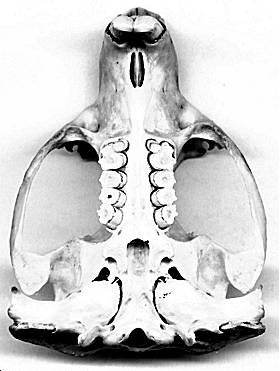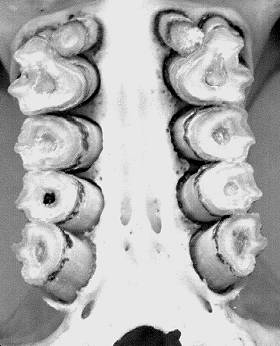Rodents form by far the largest of the mammalian orders with some 28 families and over 2000 species. This is over one-half of the extant mammalian species, and rodents of one type or another are nearly ubiquitous. Only most oceanic islands (including New Zealand) and Antarctica lack native rodents, and most areas not natively hosting rodents have had successful (from the rodents' point of view) introductions. Although all are primarily herbivorous, many (possibly most) will intake animal protein either as a regular activity or on rare occasions. Terrestrial, scansorial, semiaquatic, fossorial, and arboreal habitats have been successfully invaded. Various forms utilize cursorial, saltatorial, and gliding adaptations, while others retain the primitive plantigrade locomotion. Fossorial and aquatic adaptations are common. Size ranges from less than an ounce to over 100 pounds.
The members of the order have several characteristics in common, included a single, ever-growing incisor in each jaw. The incisor (I1/i1) is somewhat triangular in shape and has enamel only on the anterior surface. As the softer dentine making up the back of the tooth wears, the protruding enamel (left without support) breaks, leaving a new, sharp edge. Canines are absent and a variable number of premolars and molars are present. Although a tooth formula of up to 1/1 0/0 3/3 3/3 is possible, few rodents have more than 1/1 0/0 1/2 3/3, and 1/1 0/0 0/0 3/3 is common.
Typically, the jaw motion is back and forth (propalinal), and the jaw is set differently for use of the incisors (lower jaw forward) and chewing (lower jaw backwards); the masseter and pterygoideus muscles are responsible for these movements of the lower jaw. The jaw setup and dentition account for much of the success of rodents, and you are responsible for the basic information. Be sure you understand the terms protrogomorph, sciuromorph, hystricomorph, and myomorph in regard to jaw musculature. With the exception of the myomorphs, these groups probably are not monophyletic but have arisen independently in several phyletic lines.
The masseter muscle is the main muscle affected in the types named above. In rodents it is divided into three parts: the masseter superficialis, running more or less from the angular area of the lower jaw to the zygomatic arch or rostrum; the masseter lateralis, a deeper muscle; and the masseter medialis. In the protrogomorphous condition, which is primitive, all attach to the zygomatic arch. In the sciuromorphous condition, the middle layer attaches to the front of the zygomatic area and adjacent rostrum, above and lateral to the infraorbital foramen. In the hystricomorphous condition, the infraorbital foramen is greatly enlarged and all but the superficial masseter passes through the infraorbital foramen to attach to the side of the rostrum. In the myomorphous condition, the medial masseter passes through a keyhole-like infraorbital foramen to insert on the rostrum while the lateral portion passes directly to a plate anterior to the zygomatic arch.
Another descriptive terminology, easy to confuse with the above, involves the configuration of the lower jaw, reflecting the length of the pterygoideus muscle. The primitive condition is found in squirrels, mice, and rats, and is termed the sciurognathus (literally, squirrel jaw) condition. The pterygoideus is relatively short and the angle of the jaw originates below the plane of the lower incisors; in the hystricognathus (porcupine jaw) condition, the muscle is longer and the angle originates lateral to the plane of the incisors. The latter occurs in porcupines, a few African taxa, and native South American rodents.
The nature of the tooth enamel also is used in rodent taxonomy. In primitive rodents, including all Eocene taxa, there are poorly organized bands of inner enamel—the pauciserial condition. In sciurognathus rodents, there are alternating bands of inner enamel—this is the derived uniserial type. In the Suborder Hystricognatha (those with hystricognathus jaws), the inner layer of enamel is multiserial—there is a wavy pattern of the hydroxyapatite crystals.
The Mountain Beaver (Aplodontia rufa), the sole living species of the family Aplodontidae, generally is considered the most primitive living rodent. This Northwest Coast species has the protrogomorphous condition of the masseter muscles.


Left: Ventral view of skull of Aplodontia rufa. Right: Occlusal view of tooth rows and palate of Aplodontia rufa.
Last Update: 29 Dec 2007
Centennial Museum and Department of Biological Sciences, The University of Texas at El Paso